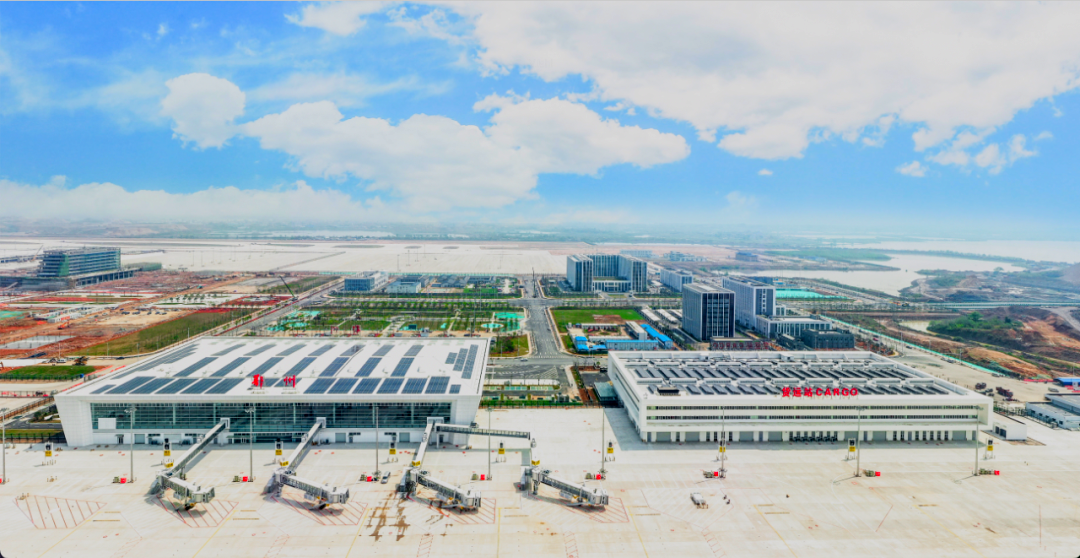Experts interpretation 丨 my country's pollution reduction and carbon reduction association and efficiency increase towards a new journey
Author:Ecological environment Time:2022.06.22

General Secretary Xi Jinping proposed at the "Double Carbon" work at the Central Economic Work Conference in 2020 that it is necessary to continue to fight pollution prevention and control to achieve the synergy effect of pollution and carbon reduction. The ninth meeting of the Central Finance and Economics Committee, the 29th and 36th collective learning of the Political Bureau of the Central Committee, as well as the 2021 Central Economic Work Conference to implement the pollution reduction and reduction operation of the key industry field, accelerate the promotion and application of pollution reduction and carbon reduction technology , To accelerate the formation of important aspects of incentives and restraint mechanisms for carbon reduction, further put forward clear requirements, and creatively put forward the construction of my country's ecological civilization during the "Fourteenth Five -Year Plan" period. Effective, promote the comprehensive green transformation of economic and social development, and improve the quality of the ecological environment from a critical period from quantity to qualitative change. The introduction of the "Implementation Plan for Devinting Carbon and Reducive Coordination" marks the entry of my country's dirt -cut carbon reduction collaborative governance work.
1. International experience for pollution reduction coordination to coordinate with coordination
The theory of coordination of carbon reduction comes from the rich practice of international green and low -carbon development. In 1995 and 2001, the second and third evaluation reports of the intergovernmental climate change special committee (IPCC) proposed the concepts of "Secondary Benefits" and "Co-BeneFits" for the first time. The results of many countries and case studies show that while controlling greenhouse gas emissions can effectively reduce the discharge of other environmental pollutants and protect biodiversity, especially sulfur dioxide, nitrogen oxides, and particulate matter are often the same as carbon dioxide emissions. Implementation will obtain dual benefits and reduce the total emission reduction cost of the whole society. The European Clean Air Plan (CAFE) and the United States "Comprehensive Environmental Strategy (IES)" have promoted such collaborative operations. Argentina, Brazil, Mexico, the Philippines, Japan, and South Korea have launched relevant policy practice. Since the "Kyoto Protocol" in 2005, the carbon market mechanism implemented in the European Union, North America, South Korea, New Zealand, Britain and other places is to refer to the US sulfur dioxide sewage discharge transactions since the 1990s. In 2009, the U.S. Environment (EPA) listed carbon dioxide as a pollutant that "threatened the public" in accordance with the jurisprudence of Massachusetts in the United States, and incorporated it into the scope of the "Clean Air Law" to carry out the power, automobiles and other industries for power, automobiles and other industries. Policy control of carbon emissions.
The differences in the development stage make developing countries pay more attention to the coordination of carbon reduction. The British and EU carbon dioxide peaks in industrialized countries in the 1970s did not have relevant policies specifically for carbon emission control. Environmental pollutants and the adjustment of the energy consumption structure of coal to oil and gas in the same period played a key role. Unlike the industrialized countries, since the 1960s, the governance of regional conventional pollutants first, and then entering the process of global climate governance from the 1990s. The time is often up to decades. Most developed countries have basically completed the process of industrialization and urbanization when global climate change entered the political agenda, and developing countries are often in the key initial stage of modern development. The difference is very different from developed countries in Europe and the United States. Therefore, in this stage, my country ’s accurately promoting carbon reduction and coordination of carbon reduction coordination and efficiency, achieving multi -target overall planning and policy resources sharing is not only an inevitable choice under the basic national conditions, but also an optimization option under long -term strategy.
2. The foundation of the work of staining and carbon reduction in my country
my country's pollution -reduction coordination governance is entering the stage of substantive advancement. my country's greenhouse gas emissions and other environmental pollutants have strong emission homologous and control measures. The coordination and synergy of the two have been accompanied by the beginning. In the early practice of Zhejiang, Shanghai, Shenzhen, Qingdao and other places, the "dual" work on air quality reaching standards and carbon dioxide peaks has accumulated a lot of good experience. According to the National Climate Strategic Center assessment, the response to climate change policies and actions implemented by my country since 2005 is equivalent to accumulating energy conservation of 2.21 billion tons of standard coal, which is equivalent to reducing sulfur dioxide discharge of about 11.92 million tons and about 11.3 million tons of nitrogen oxide emissions. In January 2021, the Ministry of Ecology and Environment issued the "Guiding Opinions on Coordinating and Strengthening the Work of Climate Change and Ecological Environmental Protection", which officially proposed the unified planning, unified arrangement, unified implementation of climate change and ecological environmental protection related work, unified implementation, unified implementation, unified implementation, unified implementation, unified implementation, unified implementation, and unified implementation, unified implementation, and unified implementation, unified implementation, and unified implementation, unified implementation, and unified implementation, and unified implementation. The principle requirements of unified inspections have clearly clarified goals and tasks from the fields of strategic planning, policies, regulations, institutional systems, pilot demonstrations, and international cooperation, marking the stage of "weak correlation" to the stage of "weak correlation" to the "strong joint" stage.
my country is gradually improving in exploration in China's dirt reduction coordination mechanism. In July 2021, the "Cooperative Promotional Promoting Carbon Dispensing Work Plan for Environmental Impact Assessment and Sewage License" and "Notice on the Pilot Evaluation Pilot on Carbon Evaporation Environmental Evaluation Evaluation of Key Industry Construction Projects" was issued to take the lead in Hebei, Jilin, Zhejiang, Shandong, Guangdong, and Guangdong , Chongqing, Shaanxi and other places, starting with key industries such as electricity, steel, building materials, non -ferrous, petrochemicals, and chemical industry to further promote the development of pilot work. Important collaborative policies such as carbon monitoring and evaluation and "three -line, one order" and carbon reduction collaboration pilot work are also conducting in a way. In September 2021, the "Carbon Monitoring Evaluation Pilot Plan" was issued. In terms of the original environment and experience of the original environmental monitoring work, focusing on the three levels of key industries, cities, and regions, exploring the establishment of high -quality carbon monitoring and evaluation technical methods and business operation mode Essence At the same time, the "Notice on Promoting the Carbon Peak Carbon and Related Work of the National Ecological Industry Demonstration Park" is clear that all demonstration parks should achieve carbon peak carbon neutralization as an important goal, and formulate corresponding implementation path measures. This is also used as a key assessment and evaluation content for the establishment, acceptance and review of the demonstration park. In October 2021, the "Notice on Carbon Evaluation Evaluation Pilot In the Planning EIA Planning EIA", preferential selection of national and provincial industrial parks that are involved in key carbon emission industries or are currently planning environmental assessment work and have the foundation of carbon emissions evaluation work. Try it first, explore the technical methods and working paths of carbon emissions evaluation in the planning environmental assessment of the industrial park, and promote the formation of the formation of climate change factors into environmental management. Third, dirt -reduced carbon reduction 2.0 policy outlook
The "Implementation Plan" is a collection of the carbon reduction coordination strategy. The plan adheres to the system concept, and strengthens the target collaboration, regional collaboration, domain collaboration, task collaboration, policy collaboration, policy coordination, and regulatory collaboration of carbon peak carbon and carbon neutralization and ecological environmental protection work. At the same time, the focus of the plan is different from the general end governance, but is the main source of environmental pollutants and greenhouse gas emissions. The implementation of the implementation structure and green upgrade are used as the fundamental way to reduce carbon reduction. The collaboration of governance processes, technical routes and incentive restraint mechanisms such as soil, solid waste, and greenhouse gas put forward higher requirements. In addition, the plan particularly focused on the coordination of the fields and the upper and lower coordination of the central land, encouraged the "head geese effect", achieved key breakthroughs, and actively promoted the establishment of a multi -level, multi -field pollution -reduced carbon -reduction coordination innovation model.
The "Implementation Plan" is an important force to help achieve the goal of carbon peaks. The plan is closely linked to the spirit of the "Opinions of the Central Committee of the Communist Party of China on the Battle of In -depth Pollution Prevention and Control", and put forward the goals and tasks of the green and low -carbon transformation of Beijing -Tianjin -Hebei, the Yangtze River Delta, Fenwei Plain and other key areas. Major strategic areas, key areas of air pollution prevention and control, key bays, key urban agglomerations, etc. Accelerate the effective model of exploration of carbon reduction and coordination and efficiency, and in accordance with the requirements of land and space planning partitions and use control requirements, carbon -to -peak carbon neutralization and targets are included in the "three lines, one order" partition control system, which not only adheres to the "one game", but also Abandoning "one -size -fits -all" fully reflects the policy intention to promote regional differentiation and classification guidance.
The "Implementation Plan" is an optimization and integration of key policies for green transformation. For the first time, the plan proposes to explore the pilot project pilot project of the collaborative control and upgrading project of air pollutants and greenhouse gas emissions in the ultra -low emissions of the steel, cement, coking industry and boiler, and requires new energy vehicles for new energy vehicles in key areas of air pollution prevention and control in key areas of air pollution. About 50%of the sales volume of new cars. The plan emphasizes the importance of the basic capabilities and infrastructure of carbon -reducing public services, continues to improve the requirements of laws, regulations, standards, and policy systems, improve the requirements of statistics, monitoring, and supervision capabilities. The idea of corporate pollution -reduced carbon reduction collaboration evaluation, the research and exploration carbon reduction coordination index will become a new ruler of local and industry full green and low -carbon transformation. "Emissile benchmarking enterprises. The plan also pays special attention to collaborative technology innovation and application, and proposes to accelerate the green low -carbon common technical demonstration, manufacturing, system integration and industrialization of green low -carbon communism in key areas to form national strategic technology formed in the field of carbon reduction. Switting carbon reduction technology innovation centers will also provide high -quality and low -cost solutions for other developing countries.
In short, the "Implementation Plan" comprehensively implements the Party Central Committee and the State Council's work deployment on carbon peak carbon and carbon neutralization, coordinating the main tasks of my country's ecological civilization and beautiful Chinese construction during the "Fourteenth Five -Year Plan" period. The establishment of the inherent connection and policy system of coordinated efficiency and policy supervision and law enforcement will effectively promote the win -win situation of environmental benefits, climate, economic benefits, and social benefits.
Author 丨 Chai Qimin and Xu Huaqing (National Center for Strategic Research and International Cooperation of Climate Change)
Edit 丨 Zhang Wei

- END -
deal!This route will be opened at this airport in Hubei

Huahu Airport will be completed and put into use at the end of JuneWhat is the pro...